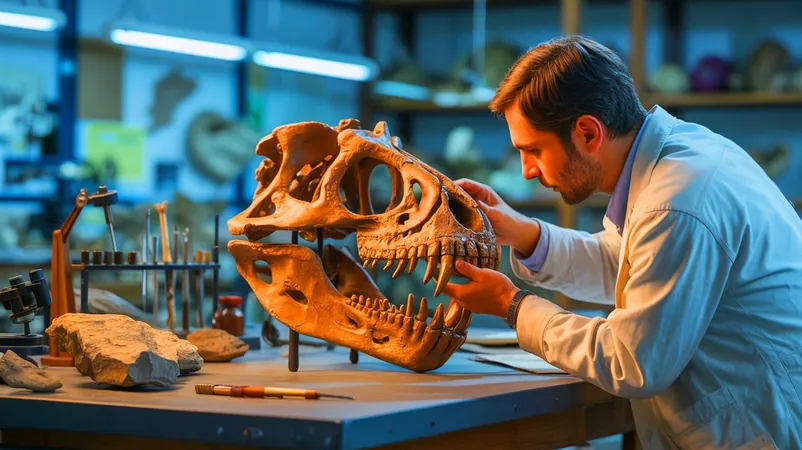
Unveiling Jurassic Secrets:Rare Fossil Discovery Changes Everything We Thought About Mammal Teeth
2025-05-05
Author: John Tan
A Groundbreaking Discovery in Portugal
In an astonishing turn of events, paleontologists have uncovered the Cambelodon torreensis fossil in Portugal's Freixial Formation, rewiring our understanding of early mammalian evolution. This pivotal find showcases the incredible journey of multituberculates, ancient mammals that thrived for over 100 million years and resembled modern rodents with their unique dental structures.
2021: A Year to Remember
The year 2021 marked a triumph for paleontology when Dr. Graça Ramalheiro from the Sociedade de História Natural stumbled upon a remarkable fossil at the Ulsa quarry, dating back to the late Tithonian age of the Jurassic Period. This pristine right lower jaw, featuring intact incisors and premolars, belongs to a young Cambelodon torreensis, now the first confirmed member of its species. The Tithonian age, spanning from roughly 152.1 million to 145 million years ago, holds rich geological treasures that provide invaluable insights into a prehistoric world.
Unlocking the Evolutionary Process of Teeth
The Cambelodon torreensis offers a rare window into the evolutionary mechanics of early mammalian teeth. By comparing this specimen's teeth to over ten other species from the Guimarota coal mine, scientists observed an extraordinary blend of features—large triangular lobes and a unique pattern of tooth replacement that progresses from the back to the front. This non-sequential replacement is incredibly rare, showcasing distinct evolutionary adaptations that had yet to be fully understood.
The Implications Are Profound
The discovery of Cambelodon torreensis extends far beyond curiosity; it fundamentally alters how we understand the early stages of mammalian evolution. The unique dental patterns suggest that previously believed exclusive adaptations of the multituberculate family Paulchoffatiidae existed much earlier than thought, pushing their timeline into the late Tithonian. This revelation indicates a richer, more diverse evolutionary story than we had grasped.
Looking Ahead: Future Research Directions
As researchers delve deeper into the evolution of early mammals, the Cambelodon torreensis brings forth new questions. Future studies could unveil insights into the environmental factors that influenced the development of multituberculates, as well as an in-depth comparison of dental structures across this group. Continued excavations in the Freixial Formation and similar regions promise to uncover even more about the world of Jurassic mammals.
The Journey Continues
This latest fossil discovery not only enhances our understanding of the complexities of early mammalian evolution but also raises the intriguing question: What other secrets lie hidden in the ancient rocks of Portugal, waiting for the next curious explorer to unveil? As paleontologists continue their quest, the story of multituberculates and their extraordinary evolutionary path is just beginning to unfold.

 Brasil (PT)
Brasil (PT)
 Canada (EN)
Canada (EN)
 Chile (ES)
Chile (ES)
 Česko (CS)
Česko (CS)
 대한민국 (KO)
대한민국 (KO)
 España (ES)
España (ES)
 France (FR)
France (FR)
 Hong Kong (EN)
Hong Kong (EN)
 Italia (IT)
Italia (IT)
 日本 (JA)
日本 (JA)
 Magyarország (HU)
Magyarország (HU)
 Norge (NO)
Norge (NO)
 Polska (PL)
Polska (PL)
 Schweiz (DE)
Schweiz (DE)
 Singapore (EN)
Singapore (EN)
 Sverige (SV)
Sverige (SV)
 Suomi (FI)
Suomi (FI)
 Türkiye (TR)
Türkiye (TR)
 الإمارات العربية المتحدة (AR)
الإمارات العربية المتحدة (AR)